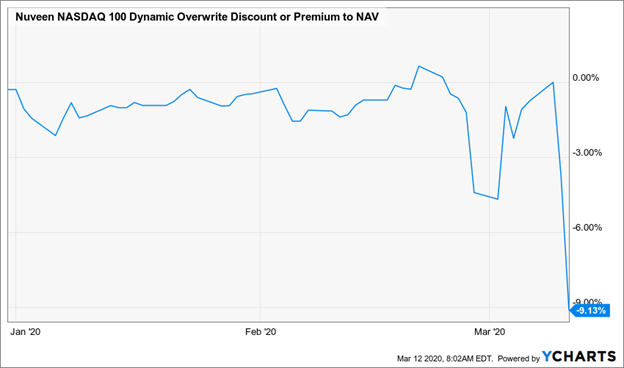Let’s set aside the noise and talk about the one thing that matters most in a volatile market like this: earnings.
According to recent FactSet data, analysts expect negative earnings growth in the first quarter of 2020. That’s no surprise, given the battering the coronavirus is laying on some sectors of the economy.
But even so, the projected decline as I write was still reasonable: just 0.1%. Things can still change, of course, but it’s important to note that this modest decline comes after a fourth quarter in which earnings grew following three straight quarters of declines—and despite analyst expectations of a 1.7% drop.
The short story is this: even though the situation is still fluid, corporate profits are showing resilience.
CEFs: Bigger Discounts, Bigger Yields
In light of those buoyant profits, the market’s recent plunge is giving us a chance to scoop up strong closed-end funds (CEFs) at bigger discounts (and with higher dividend yields) than we’ve seen in a long time.
If you’re unfamiliar, CEFs are kind of like ETFs but, unlike those more-popular funds, they have a fixed number of shares issued when they first trade on the market, so they can’t issue new shares when they get new capital. CEFs also don’t have to sell assets when people sell their shares, which is a big problem for ETFs and mutual funds, because fund managers don’t have a choice but to sell when the market is freaking out. CEFs, on the other hand, can hold on to their assets and ride out the panic.
But what’s even better is that the market panic still causes the price of CEFs to drop, even if the fund doesn’t sell any assets. This results in a misbalance between the fund’s market price (what you see on an exchange, like any other stock) and its net asset value (or the real market value of the fund’s assets).
To demonstrate this in action, let’s look at the Nuveen NASDAQ 100 Dynamic Overwrite Fund (QQQX), whose market price was trading around its NAV at the start of 2020. Then, when the market freaked out, its discount dropped to 9%, where it sits now:
A Sale Appears

This is the kind of opportunity CEFs offer investors. With QQQX, you’re getting a fund that holds big tech names like Apple (AAPL), Microsoft (MSFT) and Cisco Systems (CSCO) for 9% off. Another twist: QQQX also sells call options, a kind of insurance on its portfolio, and passes the income from those options to investors. This makes it both a tech play and an income play, and helps fuel its outsized 7.8% dividend.
And that isn’t even the biggest discount CEFs are offering right now: not by a long shot. Take, for instance, the value investing–focused Boulder Growth & Income Fund (BIF), a fund that invests in Warren Buffett’s Berkshire Hathaway (BRK.A) and other Buffett-approved stocks, like JPMorgan Chase & Co. (JPM) and American Express (AXP). BIF now trades at a jaw-dropping 17.3% discount to NAV, due to the market freak-out.
BIF’s Discount Falls Off a Cliff

That’s a tremendous value: imagine getting Berkshire Hathaway at 17% off! What’s more, Buffett is adamant that Berkshire won’t pay a dividend on his watch, but BIF is a great way to get one from Berkshire anyway. As I write, BIF yields 4.3%, nearly double the payout on the typical S&P 500 stock.
BIF and QQQX are just the start: there are dozens of stock-focused CEFs with big discounts and yields of 7% or more that are on sale right now, giving contrarians like us a chance to dive in and get both a big income stream and big gain potential.
Yours Now: 5 Cheap 8% Dividends Built for This Selloff
Let me cut straight to 5 of those cheap, high-yielding CEFs now, because they yield even more than BIF and QQQX.
I’m talking about a steady 8% yield, on average, with some of these 5 stout plays paying even more—up to 9%! And due to the selloff, these funds are trading at discount levels we haven’t seen in years, and may not see again for a very long time to come.
Steady dividend-payers like these are perfect for a volatile market, because their high payouts mean you’re getting more of your return in cash, not here-today, gone-tomorrow paper gains.
What’s more, these 5 funds’ totally unusual discounts give you another “shock absorber”—because these funds are cheap now, it’s difficult for them to get a lot cheaper! That gives them a much better chance of holding their own in the market’s next leg down—and outperforming in the next leg up.
The full story on these 5 selloff bargains (with steady 8% average payouts) is waiting for you now. Click here to get all the details: names, tickers, complete dividend histories, current discounts and much more.
